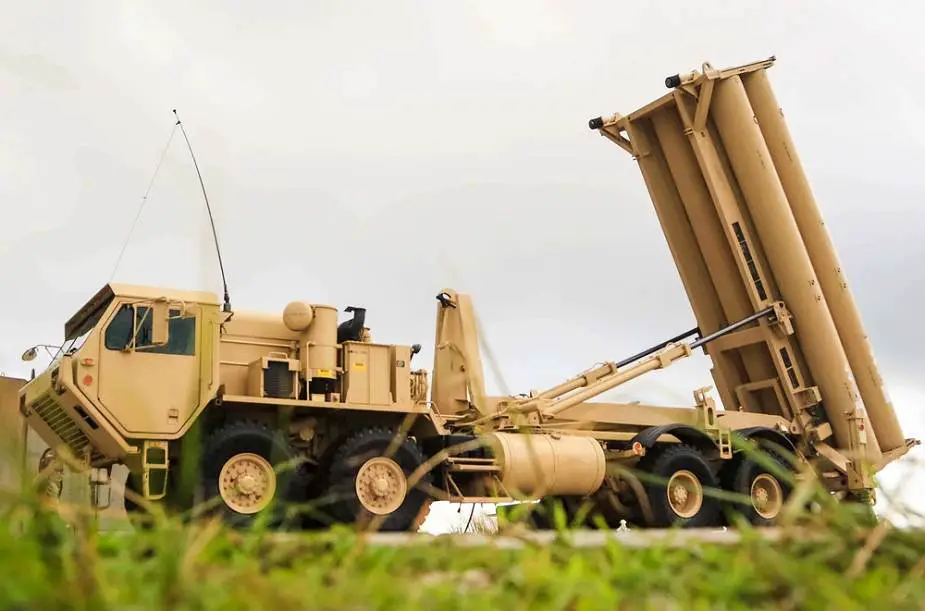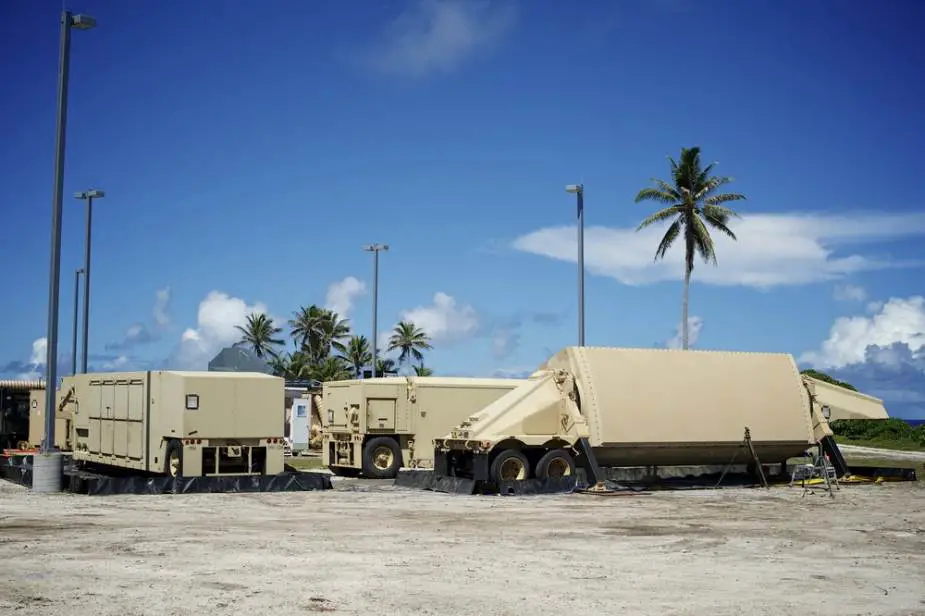Breaking news
What are the tactical advantages of US THAAD missile systems requested by Ukraine.
According to information published by the Reuters press agency on February 9, 2022, Ukraine has requested to the United States the possibility to deploy the THAAD (Terminal High Altitude Area Defense) air defense missile system in Kharkiv on the Ukrainian territory. Kharkiv is a city in northeast Ukraine located less than 50 km from the Russian border.
Follow Army Recognition on Google News at this link

A Terminal High Altitude Area Defense, or (THAAD) weapon system assigned to Task Force Talon, 94th Army Air and Missile Defense Command on Andersen Air Force Base, Guam, (Picture source U.S. DoD)
What advantages could THAAD bring for the Ukrainian armed forces in the event of a conflict with Russia?
The THAAD is the only air defense missile system in the world designed to intercept a wide class of endo- and exoatmospheric ballistic missile threats using proven Hit-to-Kill lethality. According to open-source information, Russia has deployed in Belarus, near the border with Ukraine, an undisclosed number of Iskander-M short-range ballistic missile (SRBM) systems. The U.S. THAAD will be able to intercept that type of missile.
The THAAD can defeat short-, medium-, and intermediate-range ballistic missiles in defense of strategic and operational assets in theater and across Combatant Command regions to support both homeland and regional missile defense.
The THAAD is able to counter mass raids with tactical reload timelines measured in minutes. All the components of the THAAD missile systems are based on military truck chassis offering high mobility and it can easily be redeployed to different positions depending on the threats.
A THAAD battery consists of three main components including up to 9 launcher units, each with eight missiles, the Transportable Radar Surveillance AN/TPY-2, and fire control vehicle which is the communications and data-management backbone of the THAAD. The missile is capable to destroy aerial targets at ranges from 150 to 200 km.
With its AN/TPY-2 surveillance radar, the THAAD missile system is able to detect and track enemy ballistic missiles and identify small objects at ranges of 870 to 3,000 km. The AN/TPY-2 radar is deployable in two modes including the forward-based mode (FBM), where it detects missiles in the ascent phase to cue other BMDS ( Ballistic Missile Defense System) elements and a terminal mode (TM), where it provides tracking and engagement data for terminal THAAD engagements.
In the forward-based mode, the THAAD AN/TPY-2 radar plays a vital role in the BMDS by acting as a forward-based sensor, detecting ballistic missiles early in their flight, and providing precise tracking information for use by the system.

The THAAD AN/TPY-2 radar tracked the ballistic missile targets and provided data to missile defense systems to engage and intercept. (Picture source U.S. DoD)






















